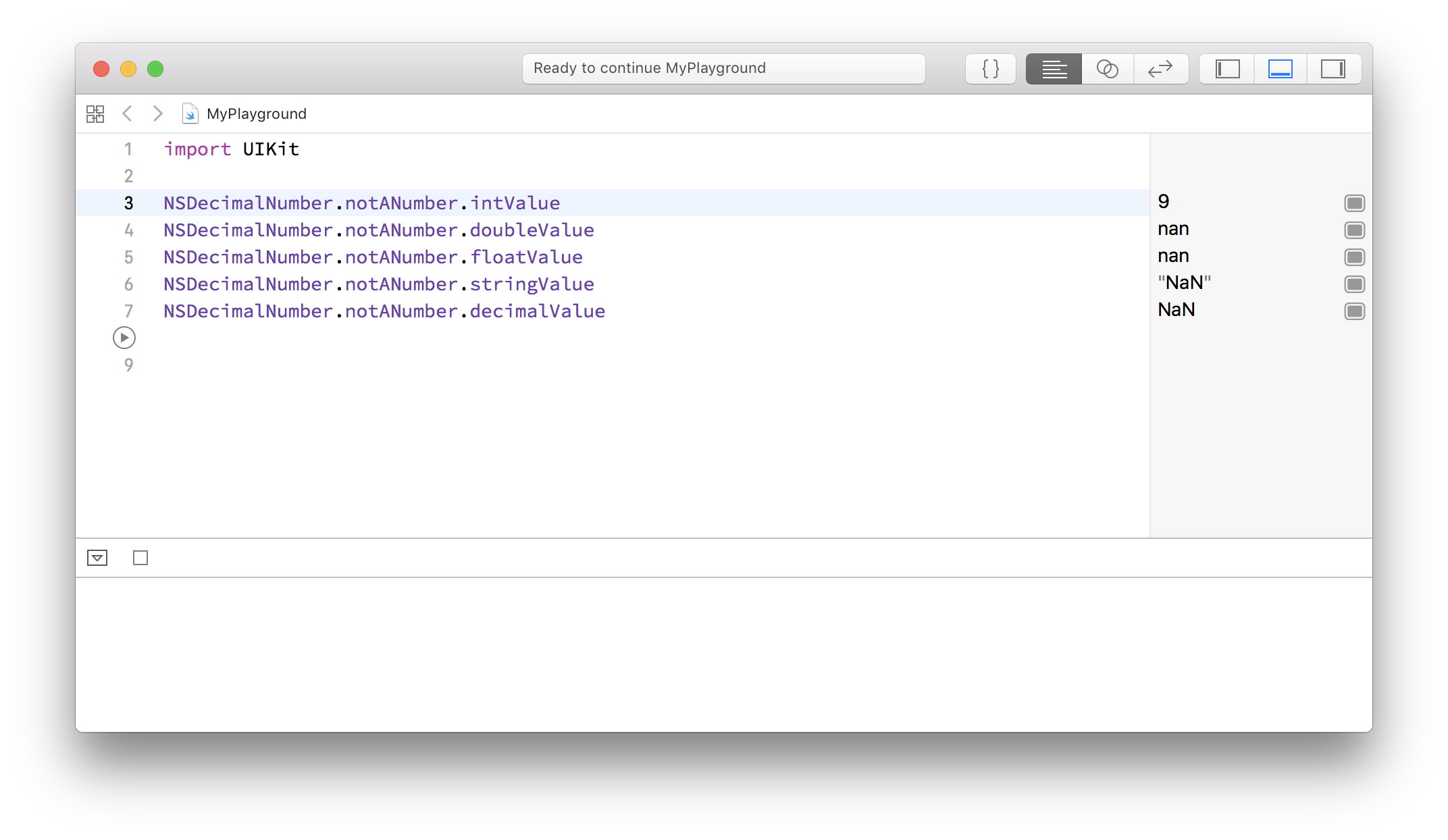I found a bug in my code that is caused by NSDecimalNumber.notANumber.intValue returning 9, while I would expect NaN (as floatValue or doubleValue return). Does anybody know why?
Why does NSDecimalNumber.notANumber.intValue return 9?
Asked Answered
Like mentioned by Joakim Danielson and noted in the Apple Developer Documentation
... Because numeric types have different storage capabilities, attempting to initialize with a value of one type and access the value of another type may produce an erroneous result ...
And since Swift's Int struct cannot represent NaN values, you get this erroneous result.
Instead you could use Int's Failable Initialiser init(exactly:) that converts your NSDecimalNumber to an Int? that will either contain it's value or be nil if it is not representable by an Int.
let strangeNumber = NSDecimalNumber.notANumber // nan
let integerRepresentation = Int(exactly: strangeNumber) // nil
In Swift you should use
Decimal.nan anyway, not NSDecimalNumber. –
Understandable © 2022 - 2024 — McMap. All rights reserved.


9something to do with maximal value forInt64(9223372036854775807)? – RejoiceNaNrepresentation. – UnderstandableInt32it is-2147483648. But still, why not-9223372036854775808forInt64instead of9? – Rejoice